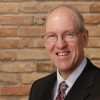They looked unserious. All the rest were dressed in their best professional clothing. But Goldberger wore an FDNY T-shirt. Huck was in a blue pullover, which he kept untucked. Few people give either much chance. They don’t have a lot of campaign money. They cast themselves as political outsiders, which means they’re outside the mainstream political structures — candidates whose ideas tend to get marginalized.
That’s the right idea, but the wrong timing.
It’s too late to change course, to do away with the centers that have cost millions to build, and to construct a new central campus. To be fair, we have yet to see how well the new centers will work, but since these candidates brought it up, let’s look once more at the arguments for a central campus.
More than two years ago, Dr. Robert Marbut, a consultant on issues related to homelessness who has worked with several cities, visited town. He may be the nation’s foremost advocate for a single large-shelter plan, and he wasn’t impressed with Utah’s leaders.
Their plan to build multiple shelters in different locations, he said, was “more messed up than any other community I’ve seen except one,” and he wouldn’t tell me which one that was.
His idea was to build one shelter, away from downtown, and to do it in such a way that single men, single women and families could be separated but with walls that easily could be moved to adjust for those times when a surge of demand meant one type or another needed extra space.
However, his arguments for economies of scale may have been the most convincing. When you build several shelters, costs multiply. Each one needs its own staff and food services, among other things. A single shelter could combine these, as well as health care resources, and it could be designed in a way that keeps people from lining up outside, he said.
His plan was somewhat similar to one John Florez, a long-time civil rights advocate and Deseret News columnist, gave me just before he died three years ago. He proposed creating a “therapeutic village” to rehabilitate people with chronic mental illnesses and addictions — small communities that provide work training and education, located away from the city.
Florez wanted the mayor to appoint a business leader to find ways to finance the facility and to use public-private partnerships to build it.
Marbut’s ideas have been subject to much criticism, mainly because his central shelter idea removes the homeless from view. People are more sympathetic to the plight of the homeless if they can see and interact with them, the thinking goes.
That may be true, but the scattered shelter plan takes the homeless out of downtown, as well. And it should be noted that, with private service providers still in the city’s core, the homeless would remain visible under either plan.
All of this is academic, of course. Every person along the Wasatch Front should hope the new resource centers work as well as politicians and others say they will. We shouldn’t want leaders to have to abandon these and build a central shelter in a few years.
It’s just that the central shelter plan never really got a fair hearing.
Goldberg’s further suggestion to use refugees to clean city streets, and his assertion that the homeless are “feral,” were clearly in the fringe category. But when he and Huck talked about a central campus for the homeless, they weren’t spouting a nutty idea.
Unrealistic, perhaps, given the time and money already spent on a different plan, but definitely not nutty.

 RSS Feed
RSS Feed

